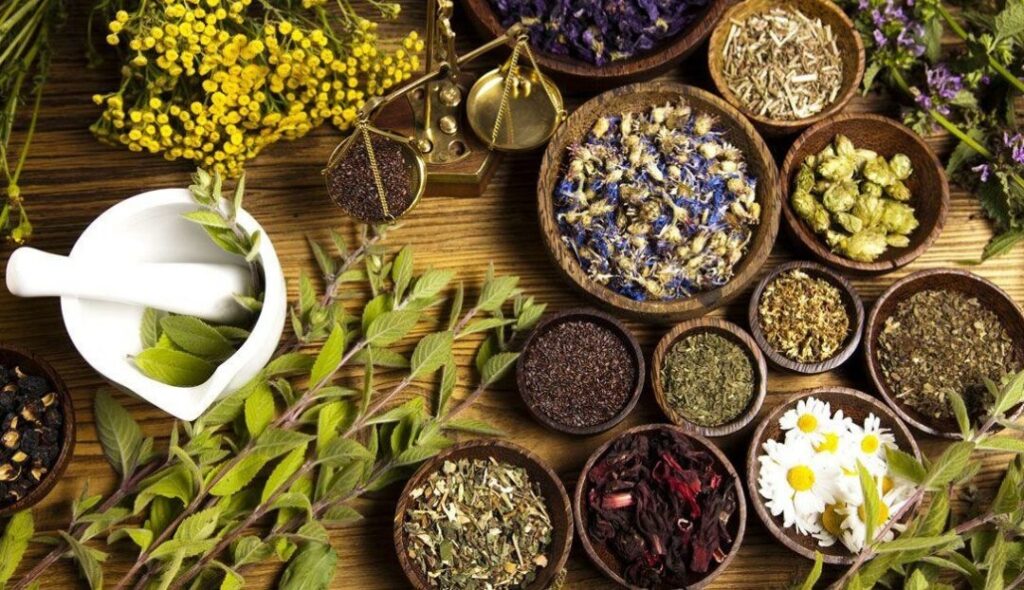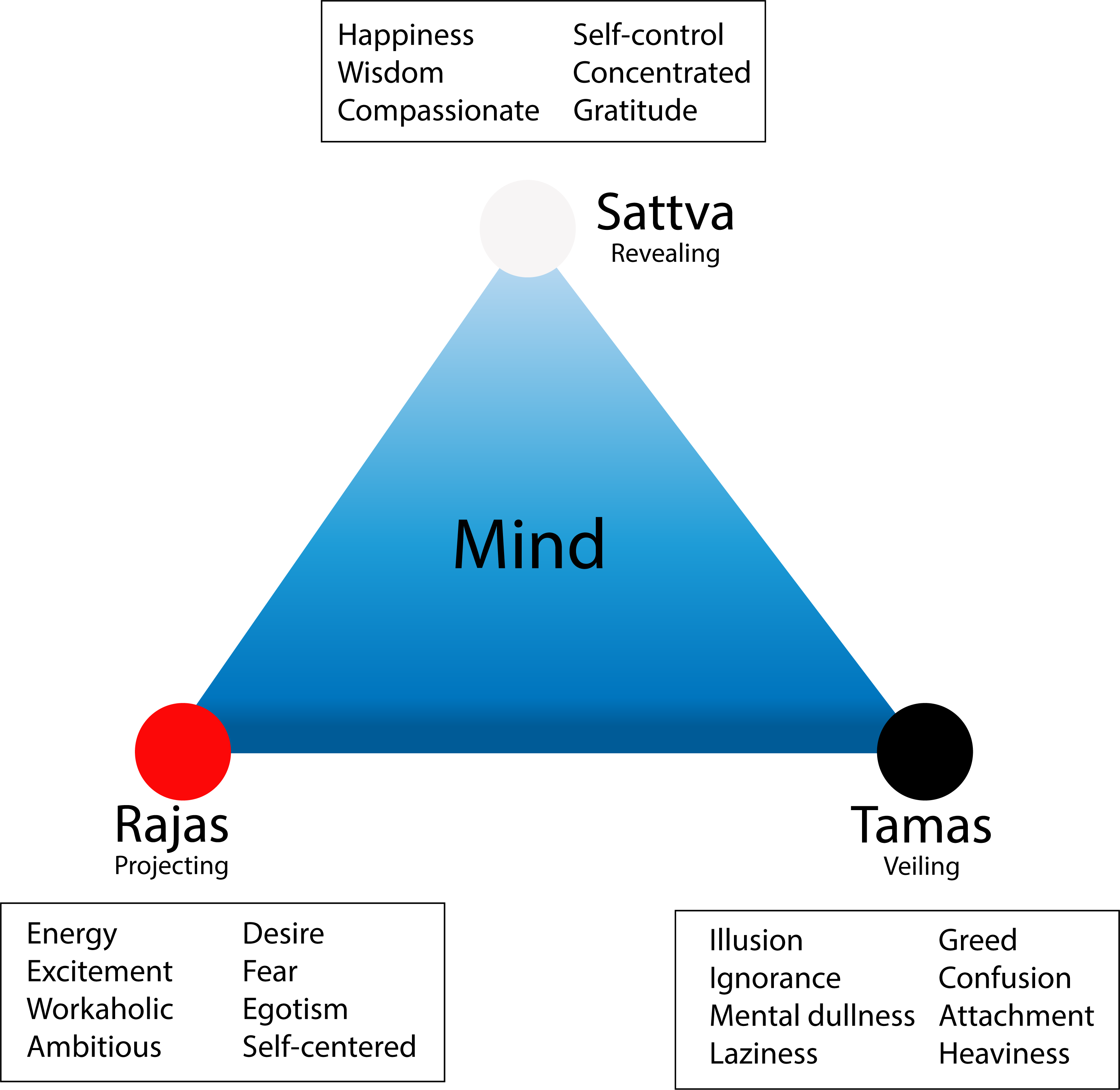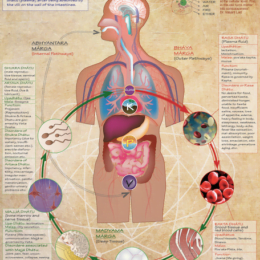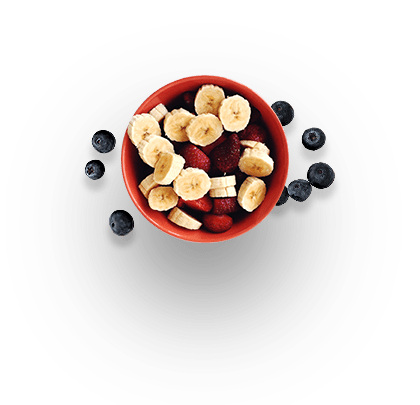
The word ‘Dravyaguna’ means the science dealing with propertries and actions of drugs. This is counterpart of modern pharmacology. It would be necessary, at first, to understand the fundamentals of Ayurveda in general before one can grasp the concepts of Dravyaguna.
Panchabhutas (Akasha, Vayu, Agni, Jala and Prithivi) are regarded as physico-chemical basis of the material objects. When life evolved, out of these five, three came forward to control and regulate the biological functions. These three (Vata, Pitta, Kapha) are known as tridhatu (tridosha in pathological state) having specific functions of Vikshepa (movement). Adana (assimilation) and Visarga (growth) respectively.
Primarily based on this fundamental background, the following concepts were developed to explain the drug action.
1. Dravya (Substance-drug & diet)
2. Guna (Property)
3. Rasa (Taste)
4. Vipaka (Final transformation)
5. Virya (Potency)
6. Prabhava (Specific potency)
7. Karma (Action )
Dravya
‘Dravya’ means herbs in this context. It is the substratum of properties and actions. Herbs was studied extensively and in extensively in ancient times. In Rigveda, we find the ‘Oshadhisukta’ (Hymns on herbs) dealing with nature and classification of herbs. Caraka has classified drugs from various angles, e.g. according to source, effect on doshas, composition, properties, actions, etc. Marvelous piece in the Charaka-Samhita is the description of fifty groups of herbs according to their main action. Similar classification is found in the Sushruta-Samhita where thirty-seven groups of drugs are defined according to their effect and therapeutic uses. In this connection, two broad propositions are established
There is no substance which can not be used as herbs.
All herbs are composed of five bhutas.
Karma
Karma is the action carried out by dravya, or an action taken to achieve a definite aim. Karma cannot exist without dravya.
Examples:
Satavari is Stanya janana (increases breast milk)
Pippali is Ama pacana (digests ama)
Kuṭaja is Atisāraghna (stops diarrhea)
Classification According to the Karmas
1. Dipana
Description: Herbs that stimulate agni are called dīpana dravyas. Their rasas are mainly sour, salty, and pungent. They increase pitta and decrease vāta and kapha. They may or may not digest āma.
Examples: Ginger, black pepper, coriander, pippalī
2. Pacana
Description: Herbs that digest āma are called pācana dravyas or āma pācanas. They may or may not strengthen agni. Their rasas are mainly bitter, pungent, and sour. Bitter herbs are the best āma
pācanas.
Examples: Mustā, kuṭaja, garlic, ginger, and lemons
3. Samana
Description: Herbs that maintain the balance of the doṣas internally without removing them from the body are called śamana dravyas. An herb or substance that reduces vāta is called vātaśamaka. An herb or substance that reduces pitta is called pittaśamaka. An herb or substance that reduces kapha is called kaphaśamaka.
Examples: Sesame oil is vātaśamaka, Ghee is pittaśamaka and Honey is kaphaśamaka.
Samana can be achieved through:
1. Dipana: Herbs such as Ajwain and Trikaṭu that help strengthen agni and balance kapha and vāta.
2. Pacana: Herbs and substances that digest ama, such as ginger, lemon, and musta.
3. Langhana (Fasting): Helps digest ama and kapha.
4. Trta (Reducing Water Intake): Problems such as edema and water retention (or bloating) can generally be taken care of by reducing water intake.
5. Vyāyāma (Exercise): Increases body heat, digests ama, removes blockage of channels, decreases kapha and vāta, helps to reduce weight.
6. Atapa Seva (walking in/being exposed to the sun): Helps reduce kapha and ama.
7. Maruta Seva (walking in/being exposed to the breeze): Helps decrease pitta.
4. Sodhana
Description: Herbs that remove aggravated doshas from the body are called sodhana dravyas. This action is more effective than Samana because the aggravated doshas actually leave the body.
Examples: Licorice, vaca and castor oil
Examples of how Sodhana can be administered:
Vamana: Upwardly, through the mouth.
Virecana: Downwardly, through the rectum.
5. Stambhana
Description: Herbs that absorb the fluids in the colon are called stambhana dravyas. Their qualities are mainly dry, astringent, and cold. They do not digest āma. Their astringent and cold qualities constrict the channels while their dry quality absorbs the fluids. These herbs should not be used in high āma conditions or to treat āma-related disorders.
Examples: Herbs with astringent tastes such as kuṭaja and nāgakeśara.
6. Grahi
Description: Herbs that help to solidify the stool, increase the appetite, improve digestion and absorption of fluids are called grāhī dravyas. These herbs have a vīrya that is heating (which causes the stool to solidify) and they are pungent in nature.
Examples: Dry ginger, mustā and cumin
7. Anulomana
Description: Herbs that act as mild laxatives are called anulomana dravyas. Āma may obstruct the channels and these herbs digest sāma malas (meaning malas with āma) and eliminate them from the rectum.
Examples: Warm milk, ghee, grapes, harītakī, and Triphalā.
8. Sramsana
Description: Herbs that act as mild purgatives are called sraṃsana dravyas. These herbs remove the malas which are sticking to the intestinal walls and expel them from the body. These herbs and substances are not āma pācanas. Sraṃsana herbs are stronger than anulomana herbs.
Examples: Āragvadha and castor oil
9. Virecana
Description: Herbs that act as strong purgatives are called virecana dravyas. They forcefully remove both sāma and nirāma malas in their liquid form from the body.
Examples: Trivrt and castor oil
10. Bhedana
Description: Herbs that act as drastic purgatives are called bhedana dravyas. They break stony hard stools and remove liquid malas and aggravated doṣas from the digestive tract. Bhedana dravyas are the strongest dravyas of all.
Examples: Aloe, kuṭkī and citraka
11. Lekhana
Description: Herbs that have a scraping action on the dhātus, doṣas, and malas are called lekhana dravyas. Meda and kapha are the primary dhātus and doṣas removed by lekhana dravyas. This type of herb is especially effective for removing excess dhātu build-up in the body such as in the case of obesity and diabetes.
Examples: Guggulu, turmeric, vacā, barley, warm water, and honey
12. Pramathi
Description: Herbs that expel aggravated doṣas which are adherent to srotas. They enter into minute srotas due to their uṣṇa and tīkṣṇa guṇas and forcefully expel doṣas accumulated there. These herbs are useful in kapha, meda diseases, and for respiratory systems and diseases of the head.
Examples: Black pepper, vacā, citraka, and pippalī
Sad Rasa (The Six Tastes)
Rasa (or taste) is the sensation that the tongue experiences.
The Six Tastes
The Bhoutic Composition of the Six Tastes
| Taste | Bhoutic Composition |
|---|---|
| Madhura (Sweet) | Earth + Water |
| Amla (Sour) | Fire + Earth |
| Lavana (Salty) | Fire + Water |
| Katu (Pungent) | Fire + Air |
| Kasaya (Astringent) | Air + Earth |
| Tikta (Bitter) | Air + Ether |
The action of each taste depends on its bhoutic composition.
There are four varieties of taste buds on the tongue, each perceiving sweet, sour, salty or bitter tastes.
Sweet and salty are perceived at the tip of the tongue, sour – on the sides and bitter – at the back.
The pungent taste irritates the mucous membrane while the astringent taste tends to constrict it.
The Rasas and Their Effects on the Doshas
| Taste | Kapha | Pitta | Vata |
|---|---|---|---|
| Madhura (Sweet) | ↑ | ↓ | ↓ |
| Amla (Sour) | ↑ | ↑ | ↓ |
| Lavana (Salty) | ↑ | ↑ | ↓ |
| Kaṭu (Pungent) | ↓ | ↑ | ↑ |
| Kasaya (Astringent) | ↓ | ↓ | ↑ |
| Tikta (Bitter) | ↓ | ↓ | ↑ |
The Rasas Related to Dosha Samana
| Dosha Samana | Taste | Effect |
|---|---|---|
| Vatasamaka | Sweet | Moist, heavy |
| Vatasamaka | Salty | Hot, moist |
| Vatasamaka | Sour | Hot |
| Pittasamaka | Sweet | Cool, heavy |
| Pittasamaka | Astringent | Cool, heavy, dry |
| Pittasamaka | Bitter | Cool |
| Kaphaśamaka | Pungent | Hot, light |
| Kaphasamaka | Bitter | Light, dry |
| Kaphasamaka | Astringent | Dry |
The Rasas Related to Dosha Vardhana (the increase of dosha)
| Dosha Vardhana | Taste | Effect |
|---|---|---|
| Vata Vardhana | Pungent, Astringent, Bitter | Dry |
| Pitta Vardhana | Pungent, Sour, Salty | Hot |
| Kapha Vardhana | Sweet, Sour, Salty | Heavy, moist |
The Effect of the Mahabhutas on Dravyas
| Mahābhūta | Effect |
|---|---|
| Akasa | Sodhana: Cleansing |
| Vayu | Sosana: Absorbing |
| Tejas | Dipana: Agni strengthening |
| Ap, Pṛthvi | Brmhana: Building dhatus |
| Vayu, Tejas | Lekhana: Scraping dhatus |
Vipaka (Post-digestive Effect)
Taste is the sense, and the tongue is the sense organ. As soon as the tongue comes into contact
with food, the taste can be perceived.
Vipāka represents the post-digestive effect of a dravya or the effects of an herb on the body due to the
process of digestion.
➔ Vipāka is the transformed state of the food after digestion and assimilation
➔ It is the ultimate result of the process of digestion
➔ It is the transformed state after digestion
➔ The final reaction of food on the body
1. Madhura (Sweet)
Tastes: Sweet and salty
Effects: Builds the dhātus, helps heal wounds, moistens the skin, creates well-formed stools, and clears urine.
Examples: Milk, ghee, butter, sea salt, and rock salt
Exceptions: Honey (pungent vipāka), Black Gram (Sour vipāka)
2. Amla (Sour)
Taste: Sour
Effects: Forms rakta dhātu, strengthens agni, reduces āma, decreases vāta (reduces pain), creates sweat, and cleanses the mouth & tongue.
Examples: Oranges, tomatoes
Exceptions: Lime and Āmalakī (sweet vipāka)
2. Katu (Pungent)
Tastes: Pungent, Astringent and Bitter
Effects: Reduces meda dhātu and excessive fluids from the body, depletes the dhātus, causes constipation, and blocks sweat glands.
Examples: Chilies, citraka (pungent), bitter melon, fenugreek (bitters), lodhra, and udumbara (astringents).
Exceptions: Pippalī, dry ginger, guḍūcī and harītakī (sweet vipāka)
Virya (Potency)
Vīryate anena iti Vīryaṃ: The property or potency of a substance which brings about the action is called vīrya.
Vīrya (potency) is responsible for the action of the herb in question. It can be translated to “the vigor or essence of an herb.”
Types of Virya
Virya is divided into two types:
1. Sita (Cooling)
Actions: Increases vāta and kapha, decreases pitta, strengthens the dhātus, stops bowel movements and sweating, increases urination, weakens agni, creates a feeling of refreshment, tones dhātus, increases moistness, nourishes dhātus and creates blockages of channels.
Examples: Sandalwood, lotus, and aloe.
2. Usna (Heating)
Actions: Decreases vata and kapha, increases pitta, increases rakta dhatu, depletes the rest of the dhatus, dries stools and urine, increases sweat, causes agni dipana and ama pacana, creates thirst, causes dizziness and opens the srotas.
Examples: Dry ginger, pippalī, and ginger
In terms of dietetics, rasa is of primary importance. In terms of herbs, virya is. Generally, Sita virya increases kapha, while Usna virya increases pitta. Vata works as a buffer. Among the six tastes, three have Sita (cooling) virya and three have Usna (heating) virya.
| Rasa | Virya |
|---|---|
| Sweet | Cooling |
| Sour | Heating |
| Salty | Heating |
| Pungent | Heating |
| Astringent | Cooling |
| Bitter | Cooling |
Prabhava
Prabhāvati samarthya viśiṣṭam bhavati anena iti Prabhāva
Prabhāva is the unique property or special effect of a substance that cannot be explained by rasa, vīrya, or vipāka. This unique effect is due to its unique bhoutic composition. It is called Acintya Śakti which translates to “a power beyond (rational) thinking, within Ayurveda’s logical frame of reference.”
Examples
Dantī and citraka have the same rasa, vīrya, and vipāka: They each have a pungent rasa and vipāka and a hot vīrya. However, dantī is a laxative and citraka is digestive.
Milk and ghee have the same rasa, vīrya, and vipāka but ghee creates agni dīpana while milk creates agni māndya.
Arjuna and viḍaṅga have the same rasa, vīrya and vipāka. But while arjuna works on the heart while viḍaṅga acts as an antiparasitic.





